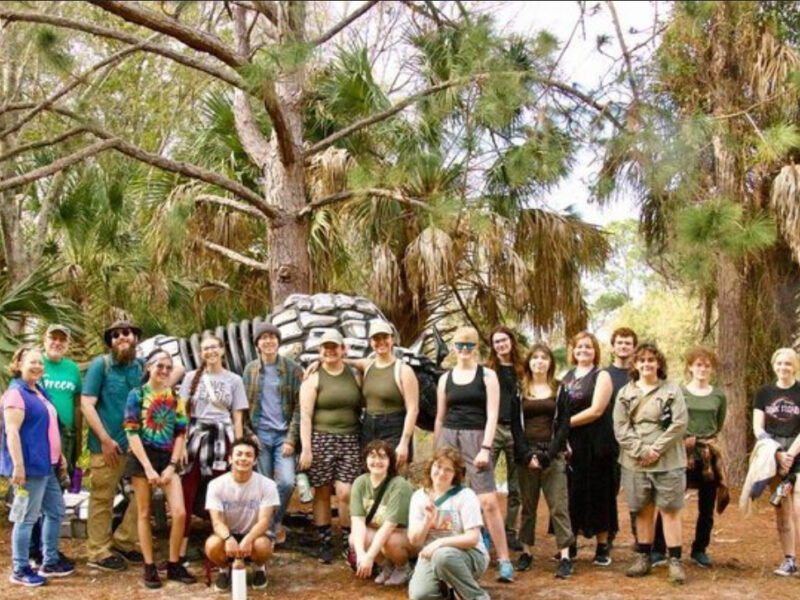
Courtesy of USF
By Carter Brantley
Think about the size of the state of Florida. Now think about a glacier that big, and melting at a rapid pace.
That’s potentially a huge problem.
The Thwaites Glacier in West Antarctica has been melting so fast that scientists from several countries are measuring the changes to help governments around the world prepare for potentially catastrophic rises in future sea level.
One of those scientists is Alastair Graham, an associate professor of geological oceanography in USF’s College of Marine Science on the St. Petersburg campus.
Graham, 38, left last month on his ninth trip to Antarctica, specifically the Amundsen Sea.
The International Thwaites Glacier Collaboration is a five-year, $25 million program to study changes in the huge glacier. Scientists from the U.S. and U.K. are leading the endeavor, with contributions from Sweden, Germany and South Korea.
The research is being financed by the U.S. National Science Foundation and the U.K. Natural Environment Research Council.
Graham won a prestigious British award for polar research in 2013, and last year his work was featured in a Rolling Stone magazine story about climate change and the glacier.
The lead photo shows Graham on the bridge of an icebreaker, peering at towering icebergs on the fringe of the glacier.
The Thwaites Glacier is not melting on the surface. It is melting from the bottom up. So Graham and his colleagues are collecting information from the ocean floor beneath and in front of the huge glacier.
He has been going to study glaciers and the changes in Antarctica since 2007.
Graham moved to America last August from the U.K., where he got his doctorate from Imperial College London.
Working in America at USF has been different, but a relatively easy transition, he said. “Here, faculty have larger groups of students around them.”
Although scientific ventures in the cold of Antarctica are never easy, Graham said, he has grown accustomed to the conditions and rigor of the work.
It is a privilege to be part of the international team, he said, and it’s important to be grateful for the opportunity.
“Last time I went I made sure to appreciate it,” he said.
Graham works with a large group of other scientists on these trips, and it is always rewarding, he said.
He is one of the scientists aboard the Nathaniel B. Palmer, an icebreaker that is working in the Amundsen Sea. The research cruise will last 10 weeks, ending in March.
The logistics of working in Antarctica – one of the most remote, inhospitable spots on Earth – can be daunting, but Graham says that the accommodations on the ship are actually quite nice.
The cooks are mostly from New Orleans, so the food is delicious, he said.
The meals include gumbo, jambalaya and other Louisiana cuisine. The cooks even celebrate Mardi Gras, with king cake to mark the occasion.
The sleeping quarters are almost like college dorms, with two sets of bunk beds in each room and a shower hall for people to wash up.
The members of the ship work in 12-hour shifts to collect data in a draining routine of work, eat, sleep.
“I want to experience the events,” Graham said, but it’s sometimes difficult to balance the work while trying to enjoy the experience.
Information from the website of the International Thwaites Glacier Collaboration was used in this report.


